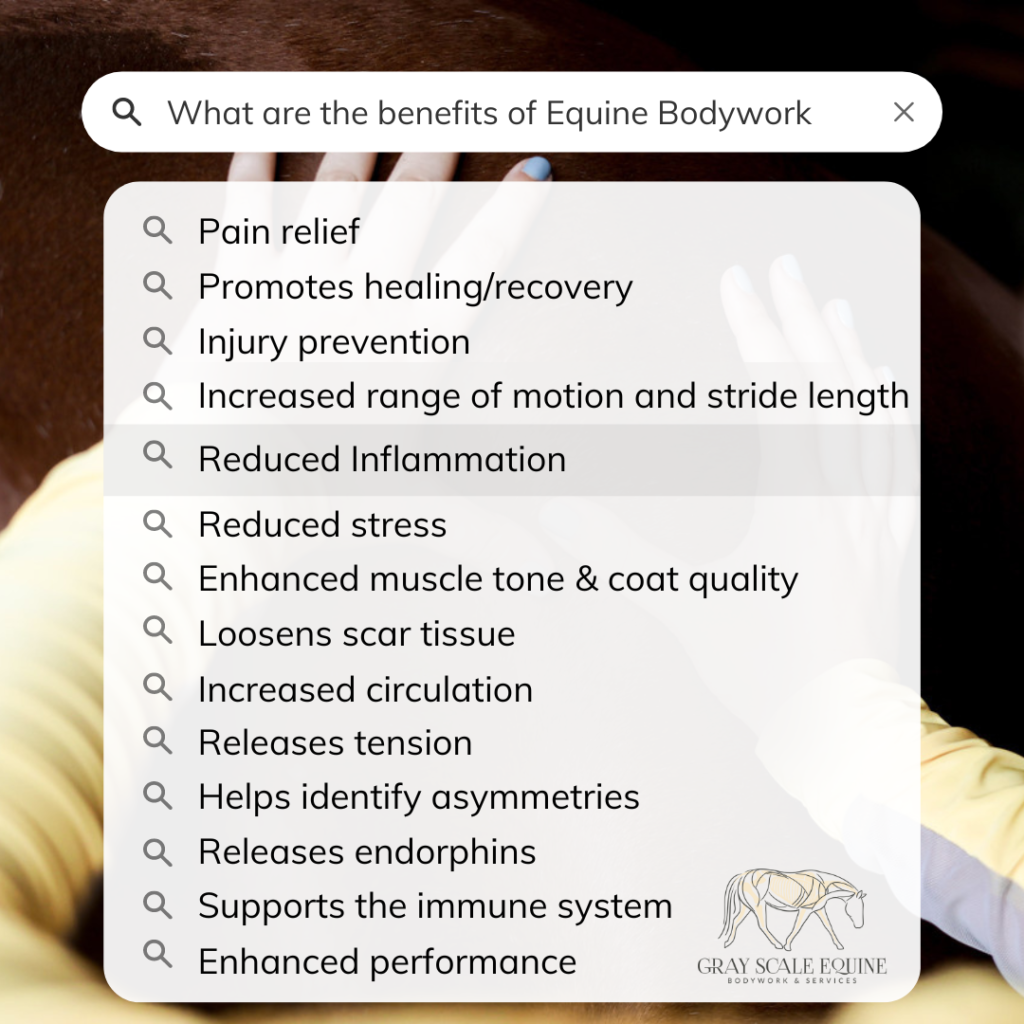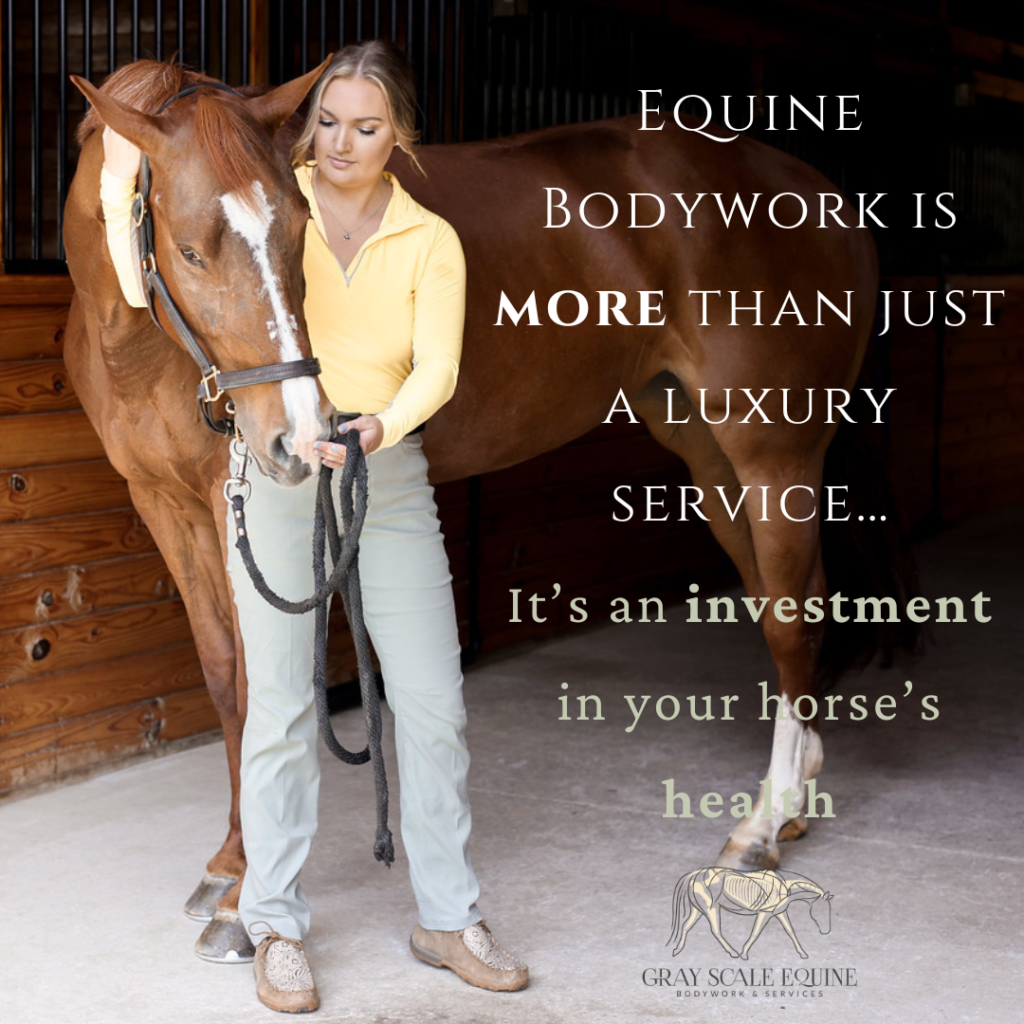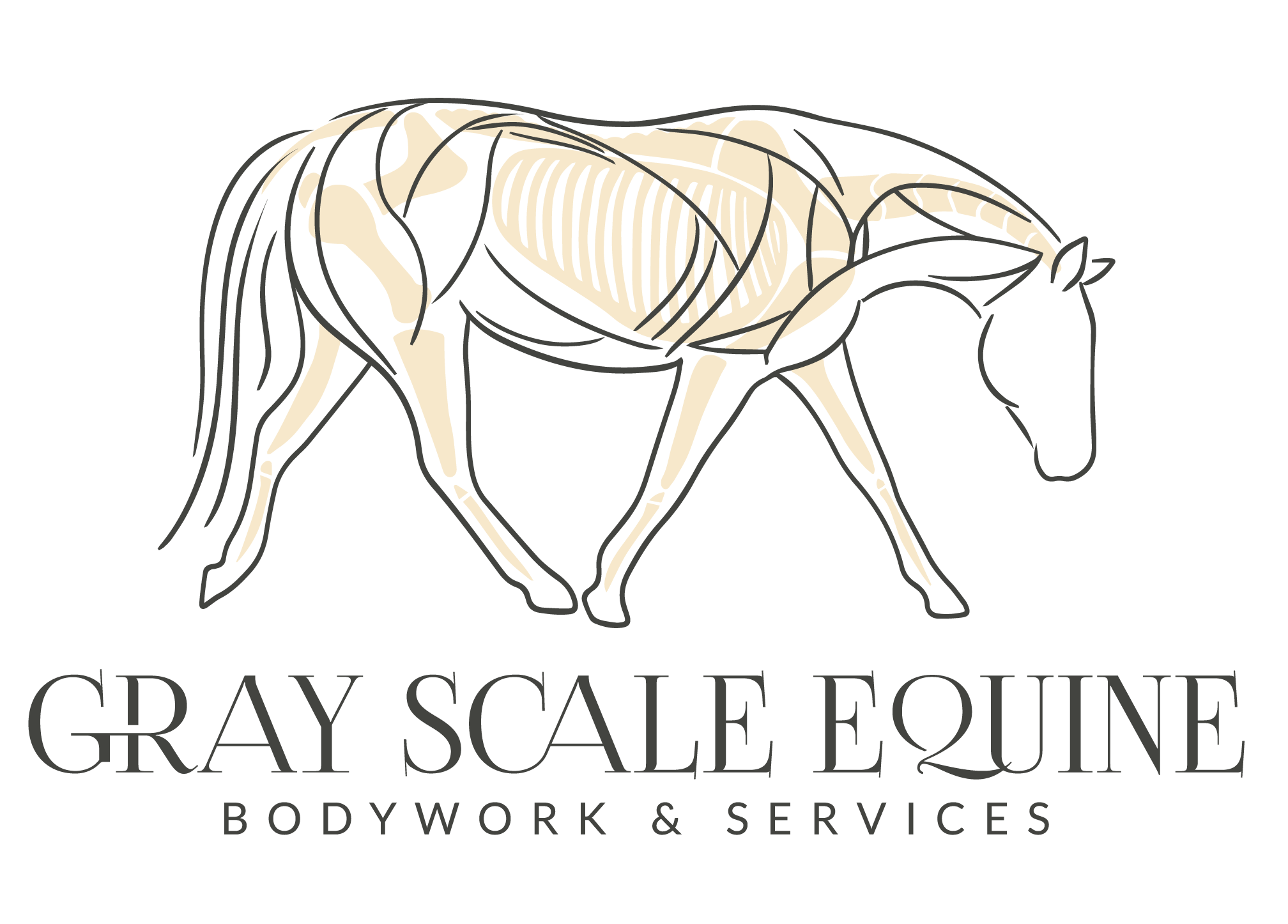What is Equine Bodywork?
Equine Bodywork is a broad term used to encompass a variety of modalities that can be used on a horse’s body with the intention to improve their overall wellness, performance, and quality of life.
The Modalities of Equine Bodywork
There are a variety of modalities that are considered to be “Equine Bodywork”. These common modalities include but are certainly not limited to: Myofascial Release, Sports Massage, Focal/Trigger Point Work, Craniosacral Therapy, Soft Tissue Mobilization, PEMF, Acupressure, Red Light Therapy, and many more.
The Benefits of Equine Bodywork
Equine Bodywork in general has been proven to aid in improving circulation, range of motion, muscle quality, coat quality, pain relief, injury prevention, decreasing inflammation, releasing tension, stress relief, gait quality, posture, the immune system, and SO much more. It’s important to remember that well oxygenated blood can do so many good things for the body!

Does my Horse need Bodywork?
Your horse doesn’t have any issues so you don’t need to waste the money on bodywork, right? WRONG.
For starters… Horses are extremely stoic animals by nature. It is their survival instinct to mask any weakness (pain) from potential predators. Yes, they are domesticated now, but they still carry these instincts around with them. They’ve learned to mask any discomfort they’re experiencing until it’s unbearable, and then they typically express their discomfort in the form of a “behavioral” outburst. This could look like any of the following: being “girthy”, bucking, rearing, refusing jumps, not moving forward, biting, throwing their head around, threatening to kick, tail swishing, pinning their ears, not taking the bit, hollowing their back while ridden, and even just acting “grumpy”. Do any of these sound familiar?
Now, I’m not saying that ALL of these behaviors are signs of pain and discomfort ALL of the time. There are some horses that truly do these things as a behavioral concern, or it could be a learned behavior from when they were formerly in pain even though it’s now resolved. However, the industry has normalized these behaviors as the horse just being “bad” or “grumpy”, instead of questioning why the horse has started doing these things in the first place. For example, a horse can become “girthy” from ulcers, poor saddle fit, muscle pain, or girth related problems. Is your horse throwing their head up, hollowing their back, and/or scooting out from under you when you mount? Maybe they’re experiencing some pain through their back that is accentuated with the weight of a rider. Or your horse starts bucking when you ask for the left lead.. Ask yourself why they just started doing this after never having a problem with their left lead before. They’re commonly acting this way because they want you to know that it hurts. This is the only way that they can communicate and try to advocate for themselves.
Invest in your Horse’s Health
How many horses do you know that are girthy and it’s just the “norm”? Everyone has accepted it but nothing is ever done about it. What if you could do something to help relieve that pain and not have to dodge their teeth every time you girth up? Or if you can go back to having clean changes without having to hold on for dear life? Or maybe you can safely mount again without worrying about your horse running off, leaving you in the dirt?
Once cleared by a veterinarian to rule out any medical concerns, Equine Bodywork can help! There are a variety of modalities that can help identify (not diagnose) potential problem areas before they become a real problem, relieve tension and pain, and prevent further concerns. Set your horse up for success by utilizing equine bodywork while it can still be a preventative maintenance routine. You may be surprised by how much it enhances your horse’s performance and comfort even if there wasn’t a suspected concern originally.
It’s worth noting the horse has approximately 700 muscles in their body.. This adds up to 40-60% of their entire weight! These 700 muscles are responsible for the movement in your horse. Yes, that’s right, the muscles are what move and stabilize the skeleton. That’s a pretty important job if you ask me. This is why it’s absolutely crucial to take care of your horse’s muscles.
Your horse is an athlete, it’s time to start normalizing investing in their health with Equine Bodywork.


